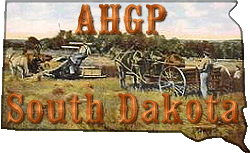

Historical Collection
|
Smallpox in Jefferson Township, 1880 and 1881 By H. M. Beavers, Jefferson, 1914 It was during the years 1880 and 1881 that the dreaded disease of smallpox was the direct cause of many deaths among the people around Jefferson. One particular instance was that of Hahn Patten, brother to C. W. Patten, who owned a saw mill in the timber at that time. Mr. Hahn Patten became exposed to the disease while hauling wood to Sioux City, and a week or so afterwards he was confined to his bed with smallpox and death resulted. The body of Mr. Hahn Patten lay in his house seven days before the coroner, then Dr. Conly, could get any one to bury him. Finally he secured the services of Mr. C. L. Beavers and John McKellar. These two men went to the Patten house, having to plow through two or three feet of snow and stayed all night. At this time and in the same house a young son of Patten's was broken out with the disease and died a few days afterwards, but neither Mr. Beavers nor Mr. McKellar contracted it. Every road leading from Jefferson was quarantined; you could get just so close to town but no further. At the quarantine house they would send someone after anything you wanted, and whiskey and tobacco proved to be the two commodities in greatest demand. In the spring of 1881 we had the big flood. Eight or nine miles west of Jefferson the ice piled from twenty to thirty feet high and blocked the river. A person could walk across this mass, but he never knew what minute it might break loose. However, it held ten days before it broke. Practically all the land was covered with water except right on the river bank, where it was dry. There would be from six to eight families gathered together into one house where there was dry land. Quite a good deal of stock was drowned at that time. After the water came out the weather turned cold enough to freeze it over and the ice was strong enough in places so that a person could walk out on it. Uncle Tom Wynn claims he had one little pig that would walk out on the ice and go to the corn crib and get corn for the other hogs. Where there was a channel it did not freeze, but in the still water it froze hard. Source: South Dakota Historical Collections, compiled by the State Department of History, Volume X, 1920.
|